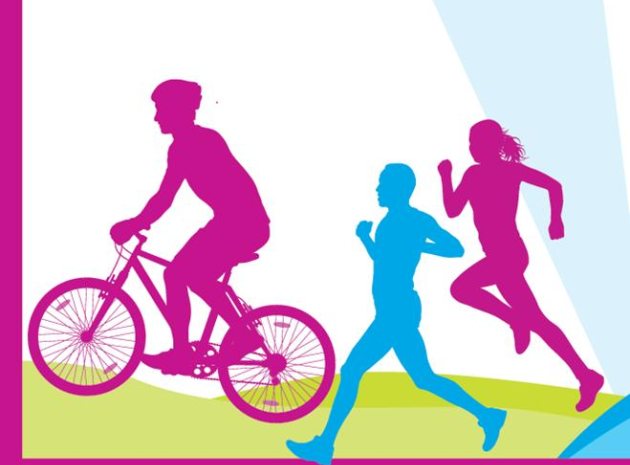It’s five years since the Coalition government dismantled the government funded school sport partnership and sports college network. This programme cost a lot of money to run, but it did ensure that PE and sport gained, and remained high profile part of school life. Particularly in areas where, left to their own devices, schools might have not bothered to do much more than run a few football and netball teams.
The new Conservative government will further increase the pressure on schools to focus on academic standards. It will also take a dim view of anything that requires them to dip into the public purse. Could PE and sport be heading back to the bad old days of the 80s and 90s? Marginalised, an optional extra, with no one too fussed about how well its taught, how many people do it, least of all benefit from it? The Youth Sport Trust says that only 21% of boys and 16% of girls meet the minimum recommended guidelines for physical activity. The charity believes that if things continue as they are, by 2035, young people are on course to be 35% less active than they were in 1961. All this would be a serious worry, if not for one thing.
Wellbeing. Even the most hard-nosed government minister might recognise that if students are going to achieve, or better still, surpass, their potential academically; those young people also need to be OK, mentally and physically. Even the most results-driven head teacher might see that a young person’s work will suffer if he or she is stressed, overweight, inactive and generally unhappy.
Chris Wright, head of health and wellbeing at the Youth Sport Trust says that there are 850,000 5-16 year olds in the UK with a diagnosable mental illness. “This manifests in bullying, cyber bullying, self-harm,” he explains, adding, “Children are under more pressure than ever before, to succeed at school. The education system is set up so that children have to perform at one moment in time. They know that how they do will determine their future, whether they go to University, find employment. Young people also have less access to support and services that address some of the issues raised by this.”
Wright believes sport and physical activity can play a part here. “Sport helps people feel better about themselves,” he comments. “We’ve noticed, for instance, that teenage girls who do sport become more confident about how they look and feel more positive about themselves in general.”
According to mental health charity, Mind, research shows that outdoor exercise can reduce depression and anxiety – indeed, by up to 30% according to the Youth Sport Trust. Mind says that doing physical activity gets people’s endorphins going and lifts their mood. Playing sport has additional benefits, too. It encourages coping strategies that help people in other areas of their life. How to deal with negative external influences. Teamwork and communication; skills which, according to employers, are often lacking in school leavers.
Chris Wright explains that the main challenge for schools is to provide the right sporting and physical activity offer; one that encourages as many children as possible to get involved and stay involved, so they can feel the benefit. While curriculum time PE is essential for developing children’s fundamental movement skills, students must have access to a wide range of sport and physical activity opportunities outside of formal PE — before, during and after school.
“Ideally there would be enough time on the curriculum for teachers to design a curriculum that all young people want to take part in. This would give children the opportunity to gain all the benefits,” Wright observes. “At primary school kids tend to take up lots of different activities. At secondary school, when they start making choices about their path, they’ll opt out of sport if they don’t think it’s relevant to their chosen lifestyle.”
Wright comments that many young people don’t play sport to compete or to improve their skills. “They might take part to be with friends, to connect with others and to feel part of something,” he says. “Traditionally there has been too much emphasis on teaching skills required to play sports. There needs to be more focus on what young people are learning through playing sport. That’s how PE and sport teaching will adapt to modern times, become relevant to today’s young people.” Body of evidence
In November 2014, Public Health England, the government’s health watchdog, released a report that stressed the link between health, attainment and physical activity. Entitled ‘the link between pupil health and wellbeing and attainment – a briefing for head teachers, governors and staff in education settings’, it stated that promoting the health and wellbeing of pupils and students has the potential to improve their educational outcomes as well as their health and wellbeing outcomes.
According to the report, the intensity and duration of children’s exercise are linked to improved academic performance. The report also stated that children who do more physical activity behave better in class, get on with their peers and are less likely to disrupt lessons. Moreover, it stated that participation in extra-curricular activities also has a positive effect on attainment.
Earlier in the same year, a study in the British Journal of Sports Medicine identified that the amount of moderate to vigorous physical activity pupils engaged with at age eleven had an effect on academic performance across English, maths and science at that time. This was also found to be the case during their final GCSE exams. Between 2007 and 2010, the number of sports college students achieving 5 A* - C increased by 7.8%. The national average was 4%.
This study also stated that the more time girls spent in moderate to vigorous physical activity at age 11 predicted increased science scores at 11 and 16; and the Public Health England report additionally revealed that pupils engaging in self-development activities, including sport, physical activity, achieved 10-20% higher GCSEs.
Balancing act
Joe Hill, a physical education coordinator with the Warrington School Sport Partnership, believes that teachers need to get the balance right, between teaching students sports skills and physical literacy, and promoting the wider benefits of PE and sport. “Both are important and naturally support each other,” he says. “Pupils get the benefits of healthy physical activity and learn how to compete fairly and follow rules.”
Hill thinks teachers can fit advice about the way PE and sport can help in other areas of life into their lessons – and he would like to see an extra hour a week on the PE timetable where teachers focus on just this. “It would help young people understand the links between sport, an active lifestyle and their overall wellbeing,” he elaborates.
Adrian Rollins, a former professional cricketer, now assistant head teacher at the Pingle School in Swadlincote, Derbyshire, can’t see the point of refocusing PE and school sport towards the wider well-being agenda. Not that Rollins, who spent two years as a school sport coordinator when he first finished playing cricket for a living in 2002, disagrees with the idea. He just thinks that good PE teachers already do this. “PE and sport has never just been about skill acquisition and playing matches,” he insists. “You learn all these things, life skills, social skills, just through playing sport and doing physical activity.”
So Rollins doesn’t think it’s necessary to teach this more explicitly, in PE lessons – but he does accept that doing so might encourage the more reluctant participants to see value in getting involved. “As a teacher, you have to sell the value of your subject to young people, but with sport, you also have to reach out to parents,” he concludes. “If parents see no merit in PE and sport then they’ll just write their child a sick note every time he or she doesn’t feel like taking part.”










